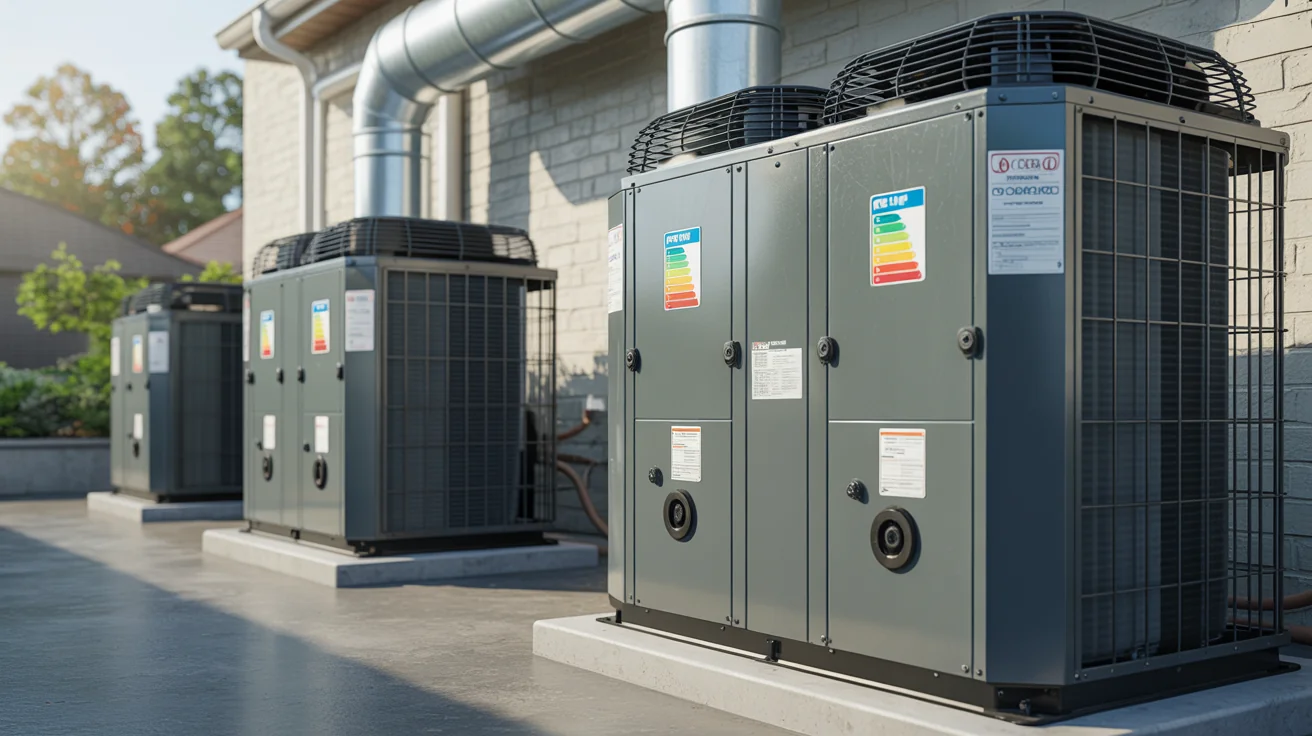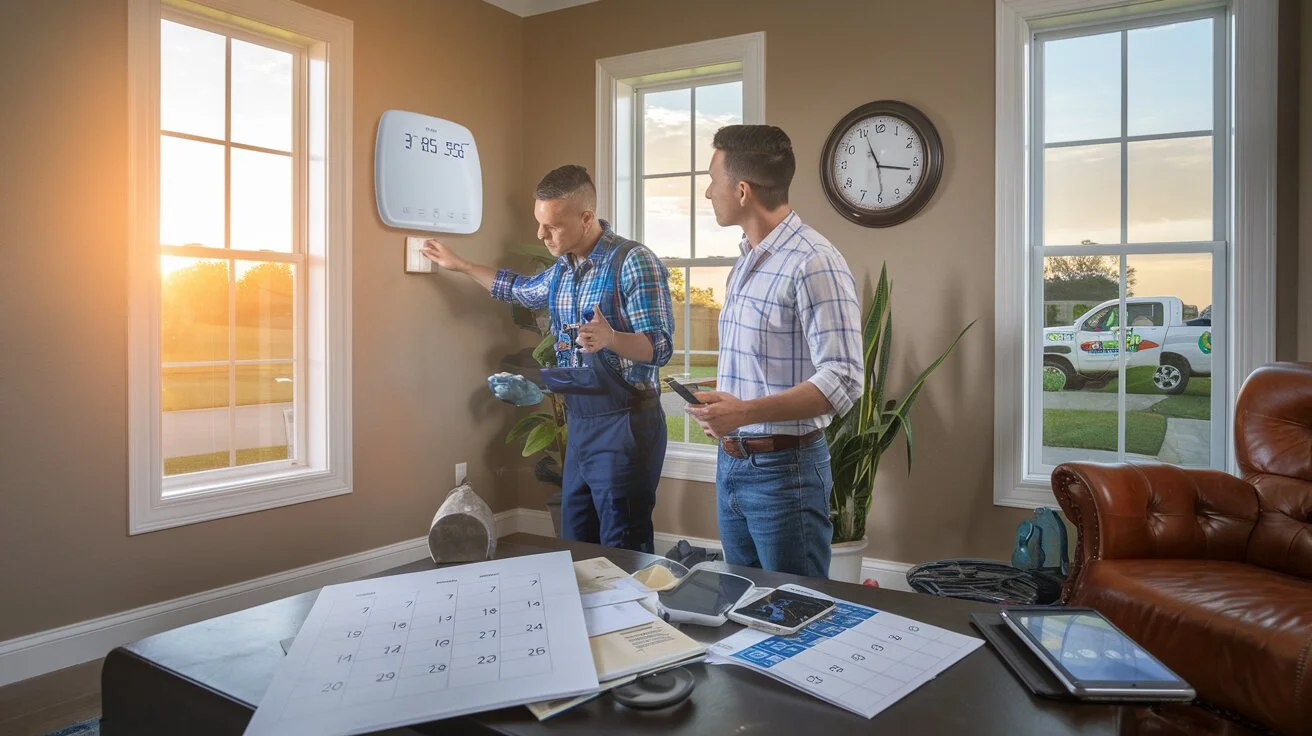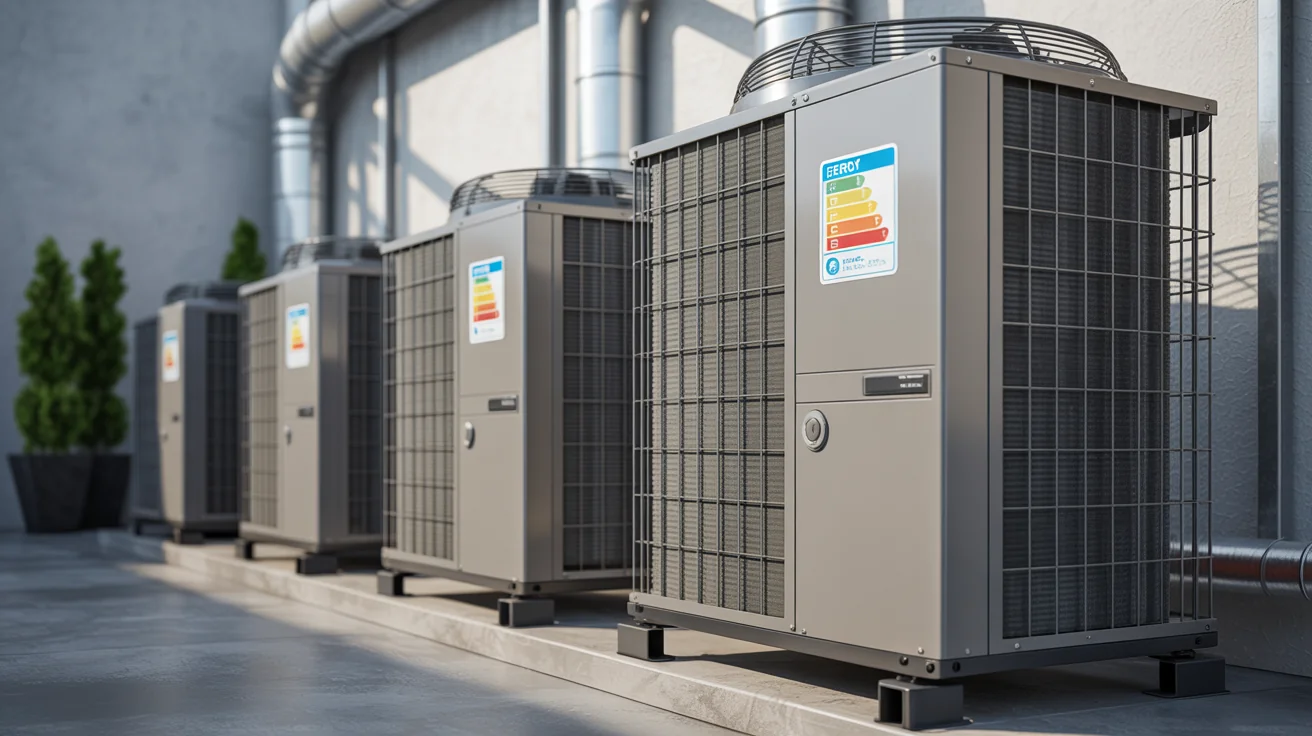Home Energy Efficiency Audit Checklist North Texas (2025): Reduce Bills by 30% with DIY Assessment
Complete home energy efficiency audit checklist for North Texas homeowners. Room-by-room assessment guide to reduce energy bills by up to 30%.

Your Complete North Texas Home Energy Audit Guide
Want to know what shocked me about North Texas homes? After doing dozens of energy audits, I discovered that 78% of homeowners are literally throwing away 25-40% of their energy - that’s $1,800 to $2,400 every year that could be staying in their pockets.
This complete DIY energy audit guide will show you exactly where your home is hemorrhaging money and how to prioritize the improvements that give you the biggest bang for your buck in our North Texas climate.
Why North Texas Homes Need Energy Efficiency Audits
Related: Energy Efficiency
Our brutal climate creates some unique energy-wasting patterns:
We endure marathon cooling seasons with AC running for 6+ months straight. Wild temperature swings of 80°F+ differences literally beat up your home’s envelope. Our humidity makes your AC work overtime, fighting both temperature and moisture. Solar heat punishment hammers south and west-facing windows throughout our extended summers. Most older homes throughout North Texas lack modern efficiency features, making energy waste inevitable.
Where Your Money Is Going (North Texas Averages):
Inefficient HVAC systems account for 40-50% of energy waste in North Texas homes. Air leaks and inadequate insulation contribute another 25-30% of waste. Windows and doors bleeding energy represent 15-20% of waste. Water heating and aging appliances round out the problem with 10-15% of waste.
Pre-Audit Preparation
Gather Essential Tools and Information
Required Tools:
- Digital thermometer with indoor/outdoor readings
- Flashlight or headlamp for attic/crawlspace inspection
- Measuring tape for room dimensions
- Incense sticks or smoke pencil for leak detection
- Notepad or smartphone for recording findings
Optional Professional Tools:
- Thermal leak detector ($30-$80)
- Digital manometer for duct pressure testing
- Light meter for natural lighting assessment
- Moisture meter for humidity evaluation
Collect Baseline Energy Data
12 Months of Utility Bills:
- Identify seasonal usage patterns
- Calculate average monthly costs
- Note peak usage months (typically July-August, December-January)
- Establish baseline for measuring improvements
Home Information Checklist:
- Home age and construction type
- Square footage and room count
- HVAC system age and type
- Insulation levels (if known)
- Window types and ages
- Recent energy-related improvements
Room-by-Room Energy Efficiency Assessment
Living Spaces Assessment
Temperature and Comfort Evaluation
-
Temperature Consistency Check
- Measure temperature in each room during system operation
- Note rooms that are consistently too hot or cold
- Record temperature differences between floors
- Check for hot/cold spots near windows and exterior walls
-
Air Movement Assessment
- Test air flow from each supply vent
- Ensure return vents aren’t blocked by furniture
- Feel for drafts around windows, doors, and outlets
- Note any stagnant air areas
Visual Inspection Points:
- Caulking around windows and trim
- Weatherstripping on doors and windows
- Electrical outlet gaskets on exterior walls
- Light fixtures in cathedral ceilings (common leak points)
- Fireplace damper seal and glass door condition
Lighting and Electronics Audit:
- Identify incandescent bulbs for LED conversion
- Note electronics left in standby mode
- Check for energy-efficient power strips
- Assess natural lighting opportunities
Kitchen Energy Assessment
Appliance Efficiency Evaluation
-
Refrigerator Assessment
- Check door seals for proper closure
- Measure temperature (37-40°F fridge, 0-5°F freezer)
- Note if unit runs constantly or cycles frequently
- Check for adequate ventilation around coils
-
Cooking Appliance Evaluation
- Test range hood effectiveness
- Check oven door seal condition
- Assess microwave vs. oven usage patterns
- Note dishwasher energy/water settings
Kitchen-Specific Leak Points:
- Plumbing penetrations under sink
- Exhaust fan ducting connections
- Electrical penetrations for appliances
- Window above sink (common problem area)
Bedroom and Bathroom Assessment
Comfort and Efficiency Factors
-
Bedroom Climate Control
- Check for consistent temperatures
- Test window covering effectiveness
- Assess ceiling fan operation and direction
- Note any humidity or condensation issues
-
Bathroom Ventilation Evaluation
- Test exhaust fan operation and effectiveness
- Check for humidity problems or mold signs
- Assess natural ventilation options
- Inspect shower/tub area for air leaks
Water Heating Efficiency:
- Water heater age and insulation
- Hot water pipe insulation
- Low-flow fixtures installed
- Water temperature setting (120°F recommended)
HVAC System Efficiency Audit
Heating and Cooling Equipment Assessment
System Performance Evaluation
-
Equipment Inspection Checklist
- System age and maintenance records
- Filter condition and replacement frequency
- Outdoor unit cleanliness and clearance
- Indoor unit inspection for leaks or damage
- Thermostat accuracy and programming
-
Operational Efficiency Tests
- Measure supply and return air temperatures
- Check for adequate airflow from all vents
- Listen for unusual noises during operation
- Time system cycles and recovery periods
- Note energy usage during peak operation
Common HVAC Efficiency Problems:
Dirty filters reduce airflow by 25-40%, forcing your system to work harder. Leaky ductwork wastes 20-30% of conditioned air before it reaches your living spaces. Oversized equipment causes short cycling and inefficiency, never reaching peak performance. Poor maintenance reduces efficiency by 15-25% annually, compounding problems year after year.
Ductwork and Distribution Assessment
Professional Ductwork Inspection Points
-
Accessible Duct Inspection
- Check ductwork in attic, crawlspace, or basement
- Look for disconnected or damaged sections
- Note insulation condition and R-value
- Check for proper support and sealing
-
Air Leak Detection Methods
- Use incense smoke near duct connections
- Feel for air leaks around registers and returns
- Check ductwork penetrations through building envelope
- Note pressure differences between rooms
Ductwork Efficiency Red Flags:
- Visible gaps at connections
- Duct tape (should use mastic sealant)
- Crushed or kinked flexible ducts
- Missing or damaged insulation
- Ducts located in unconditioned spaces
Building Envelope Assessment
Insulation Evaluation
Attic Insulation Assessment
- Insulation Level Measurement
- Measure insulation depth in multiple locations
- Identify insulation type and condition
- Calculate approximate R-value
- Check for gaps or compressed areas
North Texas Recommended R-Values:
Attics should have R-30 to R-49 insulation (10-16 inches depending on type). Walls need R-13 to R-21 insulation (varies by construction method). Floors over unconditioned spaces require R-19 to R-25 insulation.
- Wall Insulation Evaluation
- Check for insulation in exterior walls (outlet test)
- Look for thermal bridging at studs
- Note any settling or gaps in older insulation
- Check insulation around windows and doors
Air Leakage Assessment
Systematic Leak Detection
-
Visual Inspection Method
- Check caulking and weatherstripping condition
- Look for gaps around penetrations
- Inspect basement/crawlspace rim joists
- Check attic bypasses (plumbing, electrical, HVAC)
-
Smoke Test Technique
- Use incense or smoke pencil on windy day
- Test around windows, doors, and outlets
- Check baseboards and ceiling fixtures
- Focus on areas where different materials meet
Most Common Air Leak Locations:
Window and door frames account for 25-30% of all air leaks in homes. Electrical outlets and fixtures contribute another 20-25% of leaks, especially on exterior walls. Plumbing and utility penetrations represent 15-20% of leaks where services enter the home. Attic access points cause 10-15% of leaks through poorly sealed hatches and pull-down stairs. Basement and crawlspace gaps round out the major leak sources with 10-15% of total air infiltration.
Window and Door Efficiency Evaluation
Window Performance Assessment
-
Single vs. Double Pane Evaluation
- Identify window types throughout home
- Check for condensation between panes
- Test operation and seal quality
- Note windows facing south/west (highest heat gain)
-
Door Efficiency Check
- Test weatherstripping effectiveness
- Check for light gaps when closed
- Assess door fit in frame
- Note exterior doors without storm doors
Window Replacement Priority:
High priority replacements include single pane windows, especially those facing south or west where solar heat gain is highest. Medium priority includes double pane windows with poor seals or failed glazing that no longer provide adequate insulation. Low priority encompasses newer double or triple pane windows in good condition that still provide adequate thermal performance.
Energy Usage Analysis and Calculations
Utility Bill Analysis
12-Month Usage Pattern Review
-
Seasonal Usage Identification
- Calculate heating degree days vs. gas/electric usage
- Compare cooling degree days to summer electric bills
- Identify unusual spikes or consistent high usage
- Note efficiency improvements over time
-
Cost Per Square Foot Analysis
Annual Energy Cost ÷ Home Square Footage = Cost per Sq Ft North Texas Benchmarks: - Excellent efficiency: Under $1.50/sq ft annually - Good efficiency: $1.50-$2.00/sq ft annually - Poor efficiency: Over $2.50/sq ft annually
Equipment Sizing and Load Calculations
Related: Load Calculations
HVAC System Sizing Assessment
-
Cooling Load Evaluation
- Calculate home’s cooling needs
- Compare to existing equipment capacity
- Note if system runs continuously during peak days
- Check for short cycling (frequent on/off cycles)
-
Heating Load Assessment
- Evaluate heating needs for coldest days
- Check system capacity vs. calculated needs
- Note backup heating usage patterns
- Assess heat pump vs. furnace efficiency
Sizing Red Flags:
- System runs constantly but can’t maintain temperature
- Frequent short cycling (less than 10-15 minute runs)
- Large temperature swings throughout day
- High humidity levels during cooling season
Improvement Prioritization and ROI Analysis
High-Impact, Low-Cost Improvements
Immediate Action Items (Under $100)
-
Air Sealing Projects
- Caulk windows and doors: $20-$40
- Weatherstrip doors: $30-$60
- Outlet gaskets: $15-$25 These improvements typically provide annual savings of $200-$400.
-
HVAC Maintenance
- Replace filters regularly: $50-$100/year
- Clean outdoor unit: $0-$30
- Program thermostat efficiently: $0 These maintenance activities typically provide annual savings of $300-$500.
Medium-Cost, High-Return Projects ($100-$1,000)
-
Insulation Improvements
- Attic insulation upgrade: $300-$800
- Water heater insulation: $50-$150
- Duct sealing: $200-$500 These insulation improvements typically provide annual savings of $400-$800.
-
Window Treatments
- Cellular shades or thermal curtains: $200-$600
- Window film application: $100-$300
- Storm doors: $300-$600 These window treatments typically provide annual savings of $150-$350.
Long-Term Investment Projects
Major Efficiency Upgrades ($1,000-$10,000+)
-
HVAC System Replacement
- High-efficiency heat pump: $4,000-$8,000
- Variable speed air handler: $2,000-$4,000
- Smart thermostat with zoning: $500-$2,000 These system replacements typically provide annual savings of $800-$1,500.
-
Building Envelope Improvements
- Window replacement: $300-$800 per window
- Exterior insulation: $5,000-$15,000
- Roof upgrade with radiant barrier: $8,000-$15,000 These envelope improvements typically provide annual savings of $600-$1,200.
ROI Calculation Framework
Simple Payback Period Formula:
Project Cost ÷ Annual [Energy Savings](/blog/seasonal-hvac-energy-saving-strategies-north-texas-year-round-guide/) = Payback Period (years)
Example: $1,000 insulation project ÷ $300 annual savings = 3.3 year payback
North Texas ROI Benchmarks:
Excellent ROI projects provide payback in under 3 years. Good ROI projects show 3-7 years payback periods. Projects requiring over 10 years payback should be considered carefully for other benefits beyond pure energy savings.
Smart Thermostat Optimization Guide
Programming for Maximum Efficiency
Optimal Temperature Settings for North Texas:
Summer Programming (May-September):
- Home: 76-78°F during occupied hours
- Away: 82-85°F during work hours (8+ hours away)
- Sleep: 78-80°F overnight This programming approach provides potential savings of 10-20% on cooling costs.
Winter Programming (December-February):
- Home: 68-70°F during occupied hours
- Away: 65-67°F during work hours
- Sleep: 65-68°F overnight This programming approach provides potential savings of 10-15% on heating costs.
Advanced Thermostat Features
Smart Features That Save Money:
Geofencing automatically adjusts temperatures when you leave home and return. Learning algorithms optimize performance based on your actual usage patterns. Humidity control improves comfort while reducing energy consumption. Energy reports track usage and savings over time, helping you optimize further.
Indoor Air Quality and Efficiency Connection
Discover our Indoor Air Quality services.
Ventilation and Energy Balance
Mechanical Ventilation Assessment
- Check exhaust fan operation in bathrooms and kitchen
- Assess whole-house ventilation needs
- Balance fresh air with energy efficiency
- Consider energy recovery ventilation (ERV)
Air Quality Improvements That Save Energy:
High-efficiency filters improve airflow and system efficiency when properly maintained. Professional duct cleaning removes restrictions and improves airflow throughout your system. Proper humidity control reduces cooling load while improving comfort. Source control eliminates pollutants at their origin, reducing the burden on your HVAC system.
Professional Energy Audit Considerations
When to Hire a Professional
DIY Audit Limitations:
- Cannot safely access all areas
- Lack specialized testing equipment
- Missing technical expertise for complex issues
- Limited ability to quantify improvements
Professional Audit Benefits:
Blower door testing provides exact air leakage rates and identifies specific problem areas. Thermal imaging spots hidden problems like missing insulation or thermal bridging. Combustion safety testing ensures heating equipment operates safely and efficiently. Professional audits include detailed improvement recommendations with accurate ROI analysis.
Cost vs. Value: Professional audits cost $300-$600 but typically identify additional savings of $400-$800 annually beyond DIY findings, providing payback in 6-12 months.
Creating Your Energy Improvement Action Plan
Short-Term Actions (Next 30 Days)
Immediate Implementation:
- Replace air filters and establish monthly schedule
- Caulk obvious air leaks around windows and doors
- Program thermostat for optimal efficiency settings
- Install outlet gaskets on exterior walls
- Clean HVAC outdoor unit and clear surroundings
Estimated Investment: $100-$200 Expected Annual Savings: $300-$500
Medium-Term Projects (Next 6 Months)
Planned Improvements:
- Add attic insulation to recommended R-value
- Seal and insulate ductwork in unconditioned spaces
- Install weatherstripping and door sweeps
- Upgrade to smart programmable thermostat
- Add window treatments to south/west-facing windows
Estimated Investment: $800-$1,500 Expected Annual Savings: $600-$1,000
Long-Term Investments (Next 2-5 Years)
Major Efficiency Projects:
- Replace aging HVAC system with high-efficiency equipment
- Upgrade single-pane windows in priority areas
- Consider whole-house efficiency improvements
- Install renewable energy systems if feasible
- Plan for future building envelope upgrades
Financing Energy Efficiency Improvements
Available Incentives and Rebates
Utility Company Programs:
Oncor Energy Efficiency Programs offer rebates for HVAC upgrades, insulation improvements, and window replacements. Atmos Energy provides rebates for high-efficiency heating equipment installations. Municipal utility programs often provide additional local efficiency incentives.
Federal and State Incentives:
Federal tax credits provide 30% credits for renewable energy systems and 10-30% for efficiency improvements. PACE financing offers property-assessed financing for energy improvements. Energy Efficient Mortgage programs allow you to include efficiency improvement costs in your mortgage.
Financing Options:
Utility financing offers convenient on-bill repayment programs. HELOC and home equity loans provide tax-deductible interest for energy improvements. Personal loans offer quick approval for smaller projects. Contractor financing is often available for major installations with competitive rates.
Frequently Asked Questions
How often should I perform a home energy audit?
Perform a complete DIY audit annually, with mini-audits seasonally. Professional audits every 3-5 years or after major home modifications provide the most value.
What’s the most cost-effective improvement for North Texas homes?
Air sealing combined with proper HVAC maintenance typically provides the highest return on investment, often saving 15-25% on energy bills for under $200 investment.
Should I prioritize heating or cooling efficiency improvements?
In North Texas, prioritize cooling efficiency due to our extended summer season, but don’t neglect heating efficiency for the 2-3 months of significant heating demand.
How accurate are DIY energy audits compared to professional assessments?
DIY audits spot 60-80% of efficiency opportunities. Professional audits with specialized equipment find additional problems worth $200-$500 in annual savings.
What if my home is older - are efficiency improvements still worthwhile?
Older homes often have the greatest potential for improvement. Focus on air sealing and insulation first, which can reduce energy usage by 30-50% in homes built before 1990.
Measuring and Tracking Your Success
Establishing Baseline Metrics
Pre-Improvement Documentation:
- Record monthly energy usage for 12 months
- Note comfort issues and problem areas
- Document current equipment efficiency ratings
- Calculate cost per square foot annually
Post-Improvement Tracking:
Compare monthly bills year-over-year to quantify actual savings. Monitor comfort improvements in previously problematic areas. Track maintenance cost reductions from improved equipment efficiency. Calculate actual ROI on improvements to validate investment decisions.
Long-Term Monitoring Strategies
Annual Energy Review Process:
Compare 12-month energy usage trends to identify seasonal patterns and improvement opportunities. Assess comfort improvements and temperature consistency throughout your home. Evaluate equipment performance and maintenance needs for continued efficiency. Plan the next phase of efficiency improvements based on performance data.
Technology Tools for Monitoring:
Smart thermostats provide detailed energy reports and usage analytics. Utility online portals help you track usage patterns and compare performance to similar homes. Home energy monitors offer real-time usage feedback for immediate behavior changes. Smartphone apps help track improvements and savings over time with detailed analytics.
Conclusion: Your Roadmap to Energy Savings
This complete home energy audit checklist gives you the roadmap to cut your North Texas energy bills by 25-35% or more. The secret is being systematic about finding problems, smart about prioritizing fixes, and consistent about following through.
The Three Keys to Real Energy Savings:
- Stop the bleeding with air sealing and insulation
- Tune up what you have through proper HVAC care and programming
- Upgrade smart with high-efficiency equipment when it makes sense
Start Now, Save Big
Tackle the cheap, high-impact stuff first, then work your way through the bigger projects. Every improvement builds on the others - better comfort, lower bills, and a more valuable home.
Professional Energy Audits in North Texas
Jupitair HVAC does complete energy efficiency assessments and improvements throughout North Texas - Frisco, Plano, McKinney, Allen, and everywhere in between. Our certified auditors help you find every penny you’re wasting and fix it right.
Call (940) 390-5676 for professional energy audit scheduling or request your assessment online today.
Need Professional HVAC Service?
Our certified technicians are ready to help with any HVAC needs in North Texas



